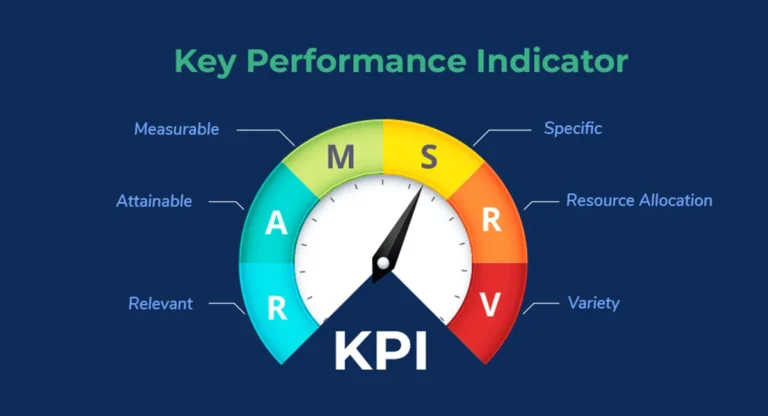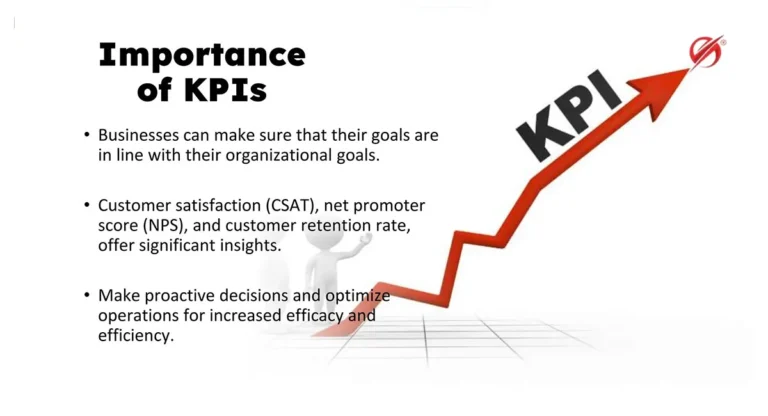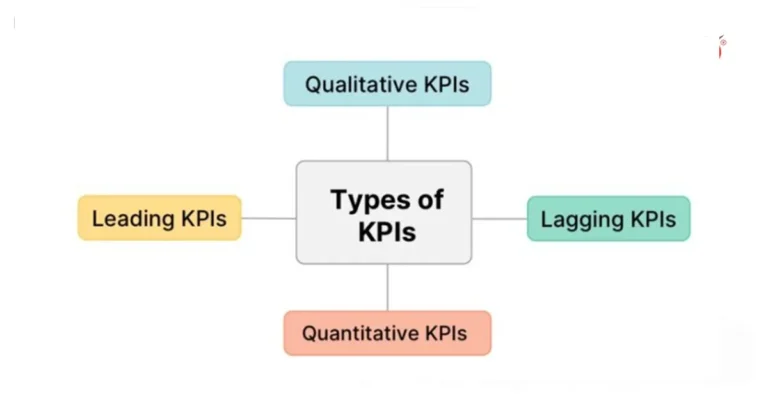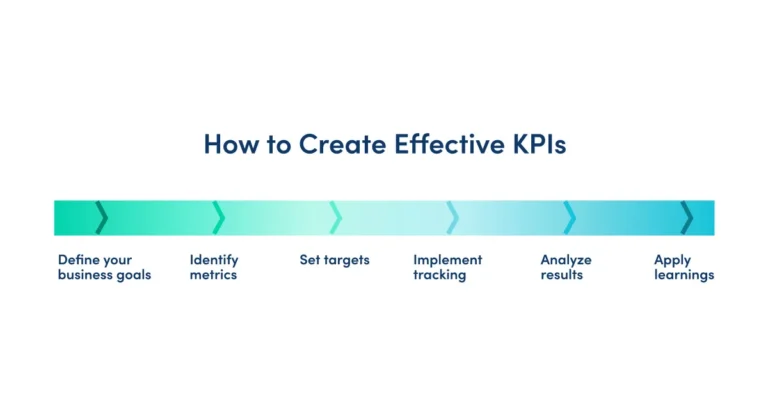Did you know that companies that utilize data-driven strategies are 23 times more likely to acquire customers and 19 times more likely to be profitable? In today’s business world, where data is more valuable than ever, Key Performance Indicators (KPIs) have emerged as essential tools for organisations looking to track their progress toward strategic goals. But what is a KPI, and why is it crucial for business success? In this blog, we will explore the KPI full form, delve into the KPI meaning, and uncover how Key Performance Indicators can drive your business toward excellence.
Table of Contents

The KPI full form is Key Performance Indicator. Essentially, a KPI is a quantifiable measure used to evaluate the success of an organization, employee, or process in achieving a specific objective. Businesses utilize KPIs across various levels to assess their progress toward strategic goals. For example, while high-level KPIs might focus on overall business performance, lower-level KPIs could be specific to departments like marketing, sales, or customer service.KPIs are crucial for tracking business progress, much like a Digital marketing agency measures campaign success.
A well-defined KPI offers a clear picture of what success looks like for a particular goal. It provides a focus for strategic and operational improvement, a means of communicating the organization’s performance, and a way to create an analytical basis for decision-making. KPIs can be used to track both individual and collective progress, ensuring that every part of the business is aligned with its overarching objectives.

Understanding the KPI meaning is vital for any organization that seeks sustained growth and improvement. Key Performance Indicators provide a framework for monitoring progress, guiding decision-making, and focusing efforts on what truly matters. Effective KPI tracking helps improve decision-making, similar to how an SEO company uses KPIs to boost website performance.
Moreover, KPIs are instrumental in fostering accountability within an organization. When employees know which metrics they are being measured against, they are more likely to take ownership of their performance and work toward achieving their targets. This can lead to increased productivity, improved morale, and better overall results for the business.

Key Performance Indicators can be categorized into various types depending on the specific goals and needs of a business:
These are measurable, numerical indicators such as sales growth, profit margins, or customer acquisition costs.
These refer to descriptive indicators, like customer satisfaction levels or employee engagement.
These predict future outcomes, helping businesses identify potential challenges before they arise. An example might be an increase in website traffic, which could indicate future sales growth.
These reflect the results of past activities, such as quarterly sales figures or annual revenue, providing insights into the effectiveness of previous strategies.

To ensure that KPIs serve their intended purpose, it’s essential to design them carefully. Here’s how:
Start by pinpointing the business objectives you want to measure. For instance, if the goal is to boost customer satisfaction, relevant KPIs could include Net Promoter Score (NPS) or repeat purchase rate.
Choose KPIs that are quantifiable and can be measured with accuracy. This ensures that the data collected will be reliable and actionable.
Establish specific, realistic targets for each KPI. These targets should be challenging enough to drive improvement but attainable to maintain motivation.

Regularly review your KPIs and adjust them as necessary. If a KPI no longer aligns with your strategic goals, consider revising it or choosing a different indicator.
Ensure that the KPIs you select are aligned with the overall business strategy. This will ensure that the efforts are directed towards achieving the broader objectives of the company.Align KPIs with strategy, similar to how a Content marketing agency tracks content performance.
Engage various stakeholders in the process of defining KPIs. This includes management, department heads, and even employees. Their input can provide valuable insights into what metrics are most important and how they can be effectively tracked.
Once KPIs are established, it’s crucial to communicate them clearly to all relevant parties. Ensure that everyone understands what the KPIs are, why they are important, and how they will be measured.
Businesses across various sectors use Key Performance Indicators to monitor and drive success. Some common examples include:
Involves establishing long-term objectives and defining the most effective strategies to achieve them. This process is crucial for aligning business activities with the overarching goals.Key Performance Indicators play a pivotal role in this process by providing measurable targets that guide business activities. By aligning KPIs with the company’s strategic objectives, businesses can ensure that every action taken contributes to the overall vision of success.
For example, if a company’s strategic goal is to expand into new markets, relevant KPIs might include market share growth, new customer acquisition rates, and geographical sales distribution. By tracking these KPIs, the company can monitor its progress and adjust its strategy as needed to ensure successful market expansion.
Despite their advantages, implementing Key Performance Indicators can pose certain challenges:
Monitoring too many KPIs can overwhelm the team and dilute focus. It’s crucial to select a few, highly relevant KPIs that align closely with the business’s strategic goals.
If KPIs are not carefully aligned with overarching business objectives, they can lead to wasted resources and misguided efforts.
Employees must understand the importance of KPIs and how their work contributes to them. Without this understanding, KPI tracking may become a box-ticking exercise rather than a meaningful performance management tool.
To overcome these challenges, businesses need to approach KPI implementation with careful planning and clear communication. This involves selecting the right KPIs, aligning them with business objectives, and ensuring that everyone in the organization understands their role in achieving them.
To get the most out of your Key Performance Indicators, consider these best practices:
Concentrate on a few key KPIs that are most critical to your business objectives. This helps ensure that the team remains focused and aligned.
Make sure all team members understand the KPI meaning and how their roles contribute to achieving these goals. Regular training and clear communication can reinforce this understanding.
Implement data analytics tools to monitor and display KPIs in real-time, enabling prompt adjustments and facilitating more informed business decisions.
Regularly review your KPIs to ensure they remain relevant to your business objectives. As your business evolves, your KPIs may need to be adjusted to reflect new goals and priorities.
Encourage employees to take ownership of their KPIs by involving them in the process of setting and reviewing them. This can increase engagement and motivation, leading to better performance.
In today’s digital age, technology plays a crucial role in the effective management of Key Performance Indicators. Advanced data analytics tools allow businesses to track KPIs in real-time, providing immediate insights into performance and enabling timely decision-making.
For example, dashboard tools can visualize KPI data, making it easier for managers to monitor progress and identify trends. Automated reporting tools can also streamline the process of collecting and analyzing KPI data, saving time and reducing the risk of human error.
By using technology, businesses can ensure that their KPI management process is efficient, accurate, and aligned with their strategic goals.
Understanding and utilizing Key Performance Indicators (KPIs) is fundamental to business success. By carefully selecting and managing KPIs, businesses can track their progress, make data-driven decisions, and ultimately achieve their strategic goals.
Don’t leave your business success to chance—take action today by implementing the right KPIs and steering your company toward a prosperous future.
Nirbhay Chauhan is a Performance Marketing and ROI Specialist with expertise in SEO, PPC, and media planning. With a passion for data-driven strategies, Nirbhay helps businesses scale by optimizing their marketing efforts to deliver measurable results. His extensive experience in driving online growth and maximizing ROI makes him a trusted partner for businesses looking to elevate their digital presence.